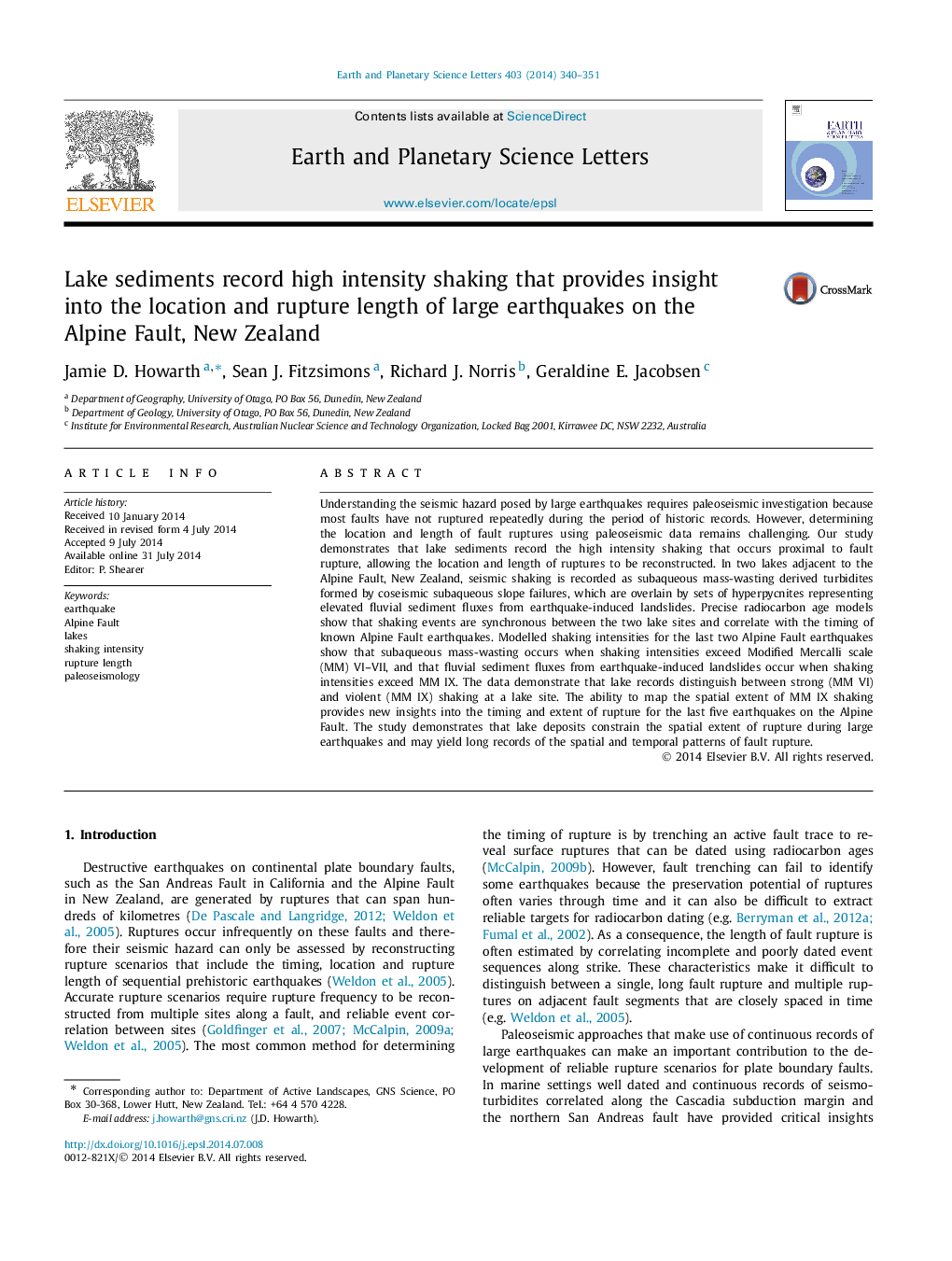| کد مقاله | کد نشریه | سال انتشار | مقاله انگلیسی | نسخه تمام متن |
|---|---|---|---|---|
| 6429143 | 1634753 | 2014 | 12 صفحه PDF | دانلود رایگان |
- Lakes act as paleoseismometers that record shaking from plate boundary fault rupture.
- Precise chronology facilitates regional correlation of high intensity shaking events.
- Lake deposits distinguish between strong (MMVI) and violent (MMIX) shaking.
- Revised rupture history for large earthquakes on New Zealand's Alpine Fault.
Understanding the seismic hazard posed by large earthquakes requires paleoseismic investigation because most faults have not ruptured repeatedly during the period of historic records. However, determining the location and length of fault ruptures using paleoseismic data remains challenging. Our study demonstrates that lake sediments record the high intensity shaking that occurs proximal to fault rupture, allowing the location and length of ruptures to be reconstructed. In two lakes adjacent to the Alpine Fault, New Zealand, seismic shaking is recorded as subaqueous mass-wasting derived turbidites formed by coseismic subaqueous slope failures, which are overlain by sets of hyperpycnites representing elevated fluvial sediment fluxes from earthquake-induced landslides. Precise radiocarbon age models show that shaking events are synchronous between the two lake sites and correlate with the timing of known Alpine Fault earthquakes. Modelled shaking intensities for the last two Alpine Fault earthquakes show that subaqueous mass-wasting occurs when shaking intensities exceed Modified Mercalli scale (MM) VI-VII, and that fluvial sediment fluxes from earthquake-induced landslides occur when shaking intensities exceed MM IX. The data demonstrate that lake records distinguish between strong (MM VI) and violent (MM IX) shaking at a lake site. The ability to map the spatial extent of MM IX shaking provides new insights into the timing and extent of rupture for the last five earthquakes on the Alpine Fault. The study demonstrates that lake deposits constrain the spatial extent of rupture during large earthquakes and may yield long records of the spatial and temporal patterns of fault rupture.
Journal: Earth and Planetary Science Letters - Volume 403, 1 October 2014, Pages 340-351
